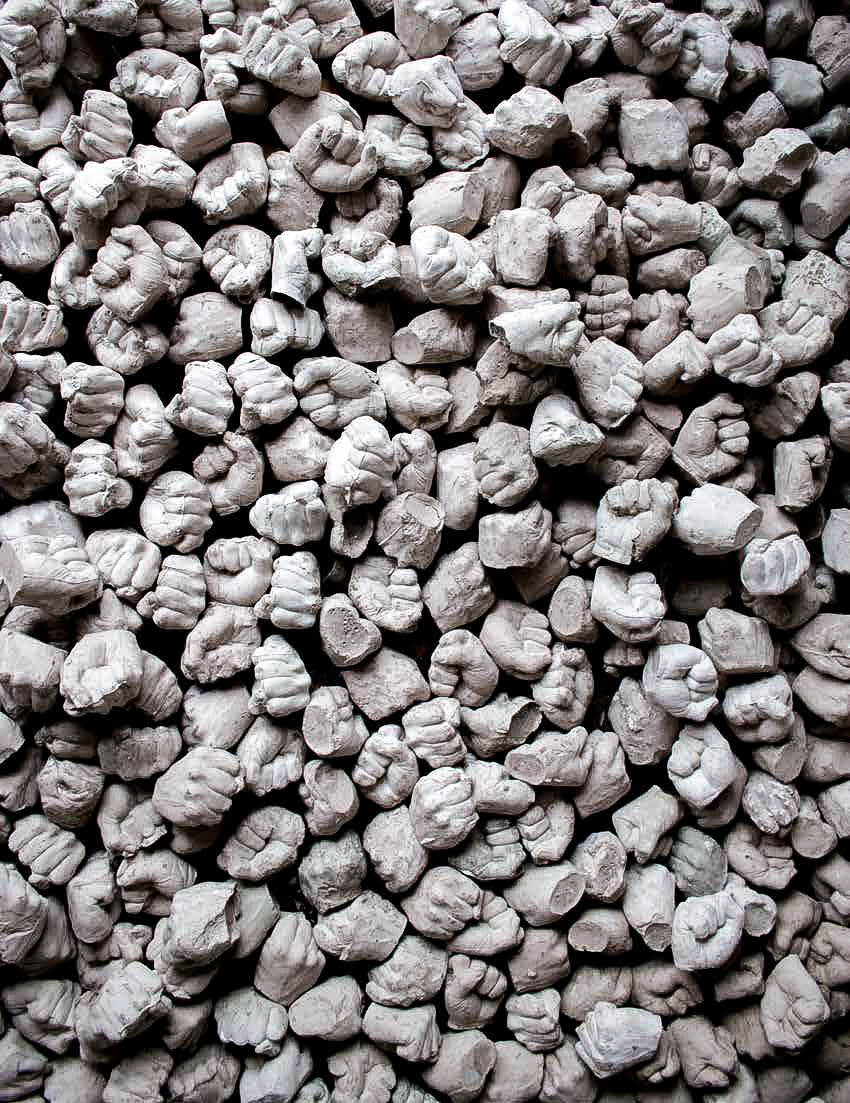Rafael Gomez Barros
Strength, 2015 - 2018
Cement & Plaster
Further images
Returning To The Seed: Which are the paths that lead to peace in Co- lombia? The works placed on this space, made by Rafael Gomezbarros, act as monuments that question...
Returning To The Seed:
Which are the paths that lead to peace in Co- lombia? The works placed on this space, made by Rafael Gomezbarros, act as monuments that question a memo- ry that is still immersed on the conflict, but despite their scale or enormous dimensions (deployed or exposed on the project version), they speak to us from their fragility and their ephemeralness. As if touched by death, these are documents of culture and brutality that have not been able to rise on a false triumphalism over a war that must have been left on the past.
However, in the country the violence spiral documen- ted by history, has also lit the social forces that claim for it to end. If memory is a place that can’t be visited (As Paul Ri- coeur stated), these memorials are only, provisionally spea- king, places: territories that the artist invites us go through and speak to us in a different way of the possibility of con- nection, even if these are found outside any estimate (or accounting) and also wake visions of emancipation which allow us to find routes that sometimes seem to make us wander into the inside of magnificent mazes, offering ways to confront their exit as well. Proposals which contribute to building that peace in the social and collective imaginary as an efficient objective to break up the imaginaries that throughout so many decades, have been strongly establi- shed by war.
Which one is the seed that the project’s name refer to, and to which we are returning? It seems there is no recipe for a new time which opens up without a strange synthesis of achievement and calamity. Gomezbarros tries to decode an architecture of violence and recoding it as a routinary challenge, finding in what used to be an image of hostili- ty, possible paths towards peace. Assumed as seeds, they search for a different territory from the one where life has been tajen, many times, uprooted.
Which are the paths that lead to peace in Co- lombia? The works placed on this space, made by Rafael Gomezbarros, act as monuments that question a memo- ry that is still immersed on the conflict, but despite their scale or enormous dimensions (deployed or exposed on the project version), they speak to us from their fragility and their ephemeralness. As if touched by death, these are documents of culture and brutality that have not been able to rise on a false triumphalism over a war that must have been left on the past.
However, in the country the violence spiral documen- ted by history, has also lit the social forces that claim for it to end. If memory is a place that can’t be visited (As Paul Ri- coeur stated), these memorials are only, provisionally spea- king, places: territories that the artist invites us go through and speak to us in a different way of the possibility of con- nection, even if these are found outside any estimate (or accounting) and also wake visions of emancipation which allow us to find routes that sometimes seem to make us wander into the inside of magnificent mazes, offering ways to confront their exit as well. Proposals which contribute to building that peace in the social and collective imaginary as an efficient objective to break up the imaginaries that throughout so many decades, have been strongly establi- shed by war.
Which one is the seed that the project’s name refer to, and to which we are returning? It seems there is no recipe for a new time which opens up without a strange synthesis of achievement and calamity. Gomezbarros tries to decode an architecture of violence and recoding it as a routinary challenge, finding in what used to be an image of hostili- ty, possible paths towards peace. Assumed as seeds, they search for a different territory from the one where life has been tajen, many times, uprooted.








